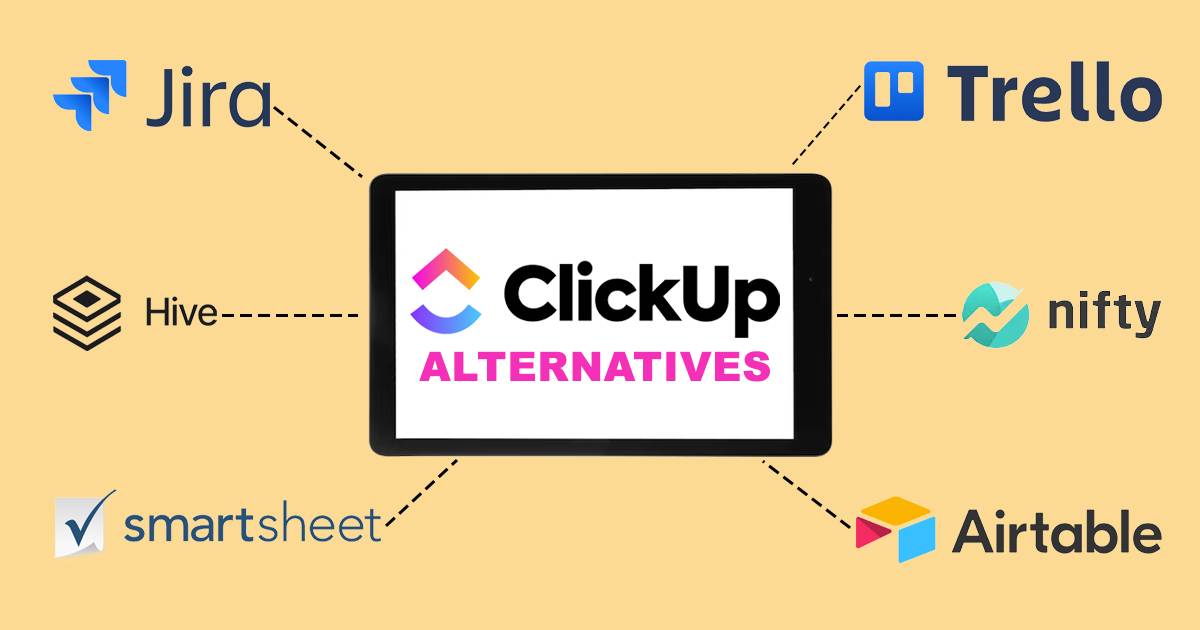For Simple Projects and Small Teams – Check Out These 12 ClickUp Alternatives

ClickUp is a popular project management tool, but it’s not always the best fit for every team or company. If you’re looking for alternatives, there are plenty of other platforms with uncomplicated features and simple interfaces to help improve workflows, manage projects, and boost teamwork. Here’s a closer look at the top options out there.
Exploring 12 Other Platforms for Project Management
Finding the right tool for managing tasks, teams, and goals depends on the specific needs of your organization. While some may prioritize simplicity, others may seek advanced features or greater customization. Below is a breakdown of noteworthy platforms that could serve as alternatives to ClickUp.
Nifty
Nifty stands out as a goal-focused project management platform designed to consolidate project planning, discussions, and tracking into one hub. Its key features include Gantt charts, Kanban boards, and integrated time tracking. Teams can align tasks with milestones, creating a clear roadmap for project goals. The clean interface simplifies onboarding, and the built-in document collaboration tools make it easy for teams to stay connected. Nifty’s seamless integration with tools like Google Drive further enhances productivity.
Airtable
Airtable combines the functionality of a database with the simplicity of a spreadsheet. It’s highly customizable, allowing teams to build workflows tailored to their needs. Its features include grid views, Kanban boards, and calendar views, making it versatile for project tracking. Airtable’s integration capabilities with apps like Slack and Zapier help automate workflows and boost efficiency. The platform’s drag-and-drop interface ensures that even non-technical users can navigate it easily.
Hive
Hive focuses on helping teams work faster with its AI-powered automation and analytics. The platform supports multiple project views, including Gantt charts, Kanban boards, and calendar views. Hive’s native email and chat integrations centralize communication, reducing the need to switch between tools. Its powerful analytics feature provides insights into team performance, making it ideal for organizations that value data-driven decision-making.
Smartsheet
Smartsheet’s spreadsheet-like interface appeals to users familiar with traditional project management tools. It offers features like task tracking, file sharing, and workflow automation. Smartsheet is particularly suitable for enterprises managing large-scale projects with complex requirements. The platform’s advanced reporting tools allow teams to analyze project data and optimize performance. However, its learning curve may require some patience during onboarding.
Trello
Trello is known for its simplicity and visually appealing Kanban boards. Ideal for smaller teams, Trello allows users to create boards, lists, and cards to organize tasks. It’s a no-fuss tool that focuses on essential project management functions without overwhelming users. Trello’s automation tool, Butler, enables users to create custom workflows and save time on repetitive tasks. While it’s user-friendly, Trello might lack advanced features for handling larger, more complex projects.
Jira
Jira is tailored for software development teams, offering tools for issue tracking, sprint planning, and bug reporting. The platform supports Agile methodologies, including Scrum and Kanban, making it a favorite among developers. Jira’s customization options allow teams to adapt it to their workflows. Jira is usually seen as easy to use, even for users who aren’t super tech-savvy. Its design is pretty straightforward, with an intuitive layout that makes it simple to create and track issues in a project.
Notion
Notion is a flexible all-in-one workspace that combines note-taking, task management, and database functionality. Teams can create custom workflows, knowledge bases, and project plans using Notion’s templates and building blocks. Its drag-and-drop interface makes it easy to design pages that suit your needs. Notion’s ability to integrate notes and tasks into a single workspace fosters collaboration and clarity. However, its setup process can be time-consuming for new users.
Monday.com
Monday.com is a work operating system that lets teams customize workflows for project management, resource planning, and more. Its visual dashboards provide a real-time overview of progress, making it easy to track tasks and deadlines. Monday.com’s automation features reduce manual work, while its integrations with tools like Slack and Zoom enhance team collaboration. The platform’s intuitive interface ensures quick onboarding, though its pricing might be a consideration for smaller teams.
Basecamp
Basecamp focuses on simplicity and clarity, offering tools like to-do lists, message boards, and schedules. It’s designed to reduce clutter and centralize communication, making it a popular choice for remote teams. Basecamp’s straightforward interface ensures that teams can get started quickly without a steep learning curve. However, it may not have the advanced features required for large-scale project management.
nTask
nTask is a comprehensive platform that caters to individuals and teams alike. It offers features like task management, time tracking, risk management, and meeting scheduling. Its simplicity and affordability make it a great choice for small businesses and startups. nTask also supports Agile methodologies, making it versatile for different project management styles. The platform’s ease of use ensures that even first-time users can navigate it without difficulty.
Asana
Asana is a powerful project management tool that emphasizes team collaboration and workflow automation. Its user-friendly interface allows teams to manage tasks, track progress, and set goals with ease. Asana’s Workload feature helps balance resources, ensuring that no team member is overburdened. The platform’s integration capabilities with tools like Google Workspace and Microsoft Teams enhance its functionality. While Asana is packed with features, some users may find it overwhelming for simpler projects.
Why ClickUp Might Not Be For Your Team
ClickUp might not be the right fit for everyone because it can be overwhelming for teams that need a simpler, more straightforward tool. With all its features and customization options, it can take time to learn and set up, which might not work for teams looking for something quick and easy. Additionally, some users find it too complex for small projects or teams with basic needs. The variety of options may also feel excessive for those who prefer a more focused, simplified platform. So, while it’s great for big, detailed projects, smaller teams or simple workflows might need something more user-friendly.
